#mimetic theory
Explore tagged Tumblr posts
Text

There is great irony in the fact that the modern process of stamping out religion produces countless caricatures of it.
René Girard
#girard#rené girard#religion#secularism#postmodernism#christian heritage#the west#civilisation#society#spiritual#mimetic theory#french#philosopher
117 notes
·
View notes
Text
Theories of the Philosophy of Expression
The philosophy of expression explores the nature, significance, and implications of human expression in various forms, including language, art, music, and body language. It delves into questions about the origins of expression, its relationship to identity, culture, and society, and its role in human communication and understanding. Additionally, it examines ethical and aesthetic considerations surrounding expression, as well as the philosophical frameworks that underpin different modes of expression.
The philosophy of expression encompasses various theories and perspectives that seek to understand the nature and significance of human expression. Some prominent theories include:
Mimetic Theory: This theory, proposed by Plato and Aristotle, suggests that art and expression imitate or reflect reality. It emphasizes the role of art in representing the natural world and conveying universal truths.
Expressivism: Expressivism posits that expression, particularly in language and art, serves as a means for individuals to express their inner thoughts, emotions, and experiences. It emphasizes the subjective and personal aspect of expression, focusing on the individual's unique perspective.
Semiotics: Semiotics, developed by Ferdinand de Saussure and Charles Peirce, explores the study of signs and symbols and their interpretation. It examines how meaning is conveyed through linguistic and non-linguistic signs, highlighting the role of context and cultural conventions in interpretation.
Pragmatism: Pragmatist philosophers like John Dewey emphasize the practical consequences of expression. They argue that expression serves a functional purpose in communication and problem-solving, shaping social interactions and facilitating collective action.
Hermeneutics: Hermeneutics focuses on the interpretation of texts and cultural artifacts, including literary works, religious texts, and artistic expressions. It examines the process of understanding and meaning-making, considering the role of context, tradition, and the interpreter's perspective.
Aesthetic Theory: Aesthetic theories, developed by philosophers like Immanuel Kant and Arthur Schopenhauer, explore the nature of beauty and artistic experience. They examine how aesthetic judgments are formed, the criteria for evaluating art, and the relationship between art and morality.
Phenomenology: Phenomenological approaches, as developed by Edmund Husserl and Maurice Merleau-Ponty, explore the lived experience of expression. They focus on the first-person perspective and the embodied nature of expression, examining how individuals perceive, interpret, and engage with the world through expression.
These theories offer diverse insights into the complexities of human expression, highlighting its multifaceted nature and its significance in shaping individual and collective experiences.
#philosophy#epistemology#knowledge#learning#chatgpt#education#ontology#metaphysics#psychology#Philosophy of language#Philosophy of art#Philosophy of music#Body language#Communication#Identity#Culture#Aesthetics#Ethics#Human experience#Mimetic theory#Expressivism#Semiotics#Pragmatism#Hermeneutics#Aesthetic theory#Phenomenology#Interpretation#Meaning-making
19 notes
·
View notes
Text
The Cyclical Nature of Violence in American Immigration History Explained
Medium Facebook Instagram Goodreads Tumblr Paroxysm French philosopher René Girard’s Violence and the Sacred and other works are required and recommended reading for anyone struggling with the cyclical nature of human violence in general. In this difficult-to-follow book, Girard guides us through his Mimetic Theory, which provides an interesting origin story or theory of human paroxysm…
#Anthropology#Bible#Blog#Blogger#Blogging#Books#Christianity#Church#Ethics#Faith#God#History#Immigration#Jesus#Journal#Mimetic Theory#Old Testament#Olivet Theory#Politics#Reading#Rene Girard#Review#Sociology#Thoughts#Trump#US History#WEOC#Writers and Editors of Color#Writing
0 notes
Text
Feminine Beauty in Art: Evolution and Aesthetics
Throughout the history of art, the concept of feminine beauty has been in a constant state of transformation, evolving alongside the many artistic movements that have defined different epochs.
#abstract concept#aesthetic#aesthetic pleasure#art imitates reality#ARTICLES#artistic movements#beauty in art#classical antiquity#Collections#colour#composition#contemporary art#cultural context#cultural standards#emotional expression#expressive theory#feminine beauty#femininity#formalist theory#historical periods#human experience#mimetic theory#observer&039;s experience#perception of beauty#political movements#Rodrigo Granda#shape#social values#subjective concept
1 note
·
View note
Text
trying to explain to my mother that the number three is not actually requirement for a throuple because two people can be three people. four people can be three people. a guy can contain any number of additional guys what’s so hard to understand. and she’s like What’s wrong with you
#what mimetic theory dies to a mf#conversation started bcs she read an article in the newspaper about throuples and i said oh just like oedipus and jocasta#like a) ghost of laius. b) they are both existing in multiple roles simultaneously c) OEDIPUS IS THREE ENTIRE GUYS#beeps
25 notes
·
View notes
Text
How old are the Witches 5?
After my "how tall are the Witches 5" here's a post trying to find out how old they are.
I'd like to start by saying their ages are probably not consistent among the different versions (manga, 90s anime, sera myu, crystal) but I still think the range is similar.
Manga
Given the format being in black and white, it's hard to distinguish which colour are their respective bows. The only picture in color in the Mugen uniform is Mimete, and her bow is green, meaning she should be in high school (so around 15-18 years old). I would assume it's the same for the others.
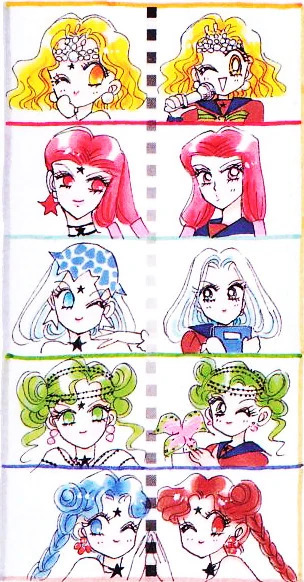
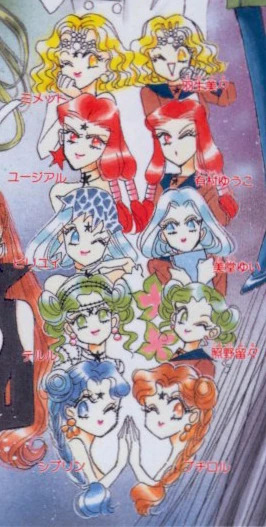
90s anime
Just like a lot of characters (especially villains), the Witches 5 look significantly older in the 90s anime. But I do think it's only because of the art style and their age is still close to their manga counterpart. Unlike the manga, only two witches were shown wearing the Mugen uniform (mainly Viluy, Tellu only when her student ID is shown). In both cases, their bows were both green. This should mean these two are in high school (again 15-18 years old). I would assume most of the other witches are probably in the same age range, but I think Eudial is probably 18 (or more) and the oldest. First, driving a car is 18+ in Japan, and the other witches called her old behind her back so it seems fair to assume she's older than them.

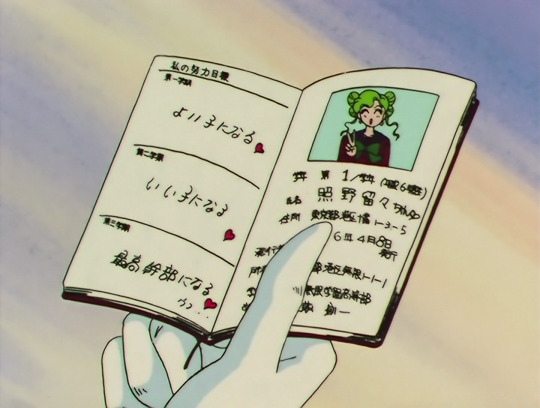
Crystal
Meanwhile in Crystal, except for Eudial, every witches wear a blue ribbon, meaning they are in middle school (and Eudial is in high school, making her the oldest). This means Mimete, Viluy, Tellu, Cyprine and Ptilol are around 13-15 while Eudial is 15-18 (possibly closer to 15-16 so she wouldn't be that much older than the others). It also makes them all (minus Eudial) around the same age as the inners, who were 14-15 around that time and still in middle school.
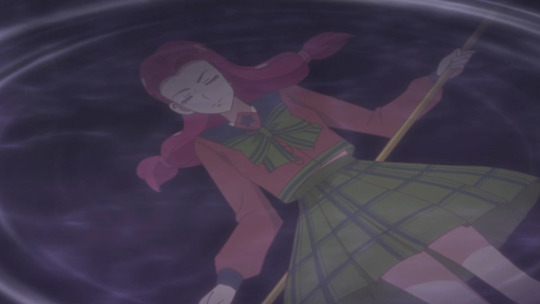
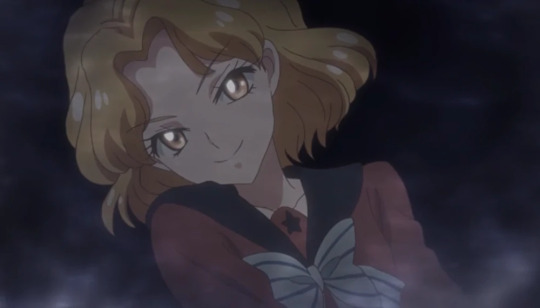
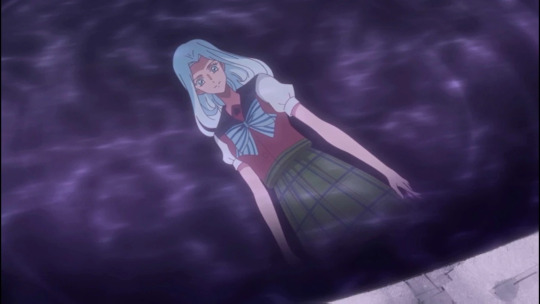
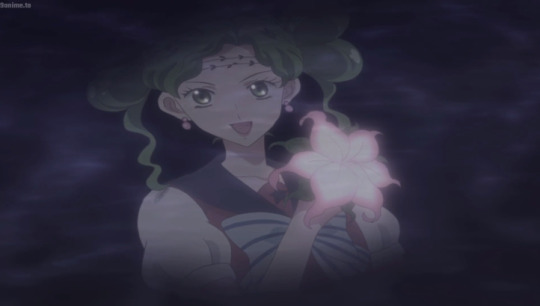
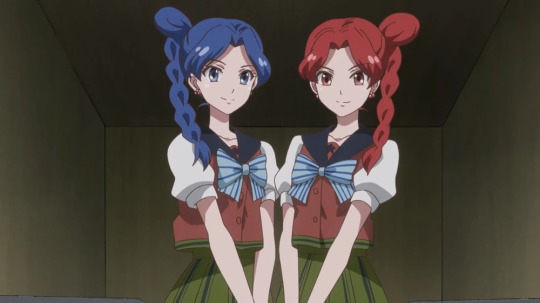
And let's add the musicals for good measure. I just want to precise that the green bows are not the default in the musicals, Hotaru is wearing her blue bow in all versions, and there were elementary school girls wearing the red bow.
Bandai Myu
Eudial, Mimete, Tellu and Viluy are shown wearing the green bow with their uniforms, so it's fair to assume they are high school age. Cyprine isn't shown with a school uniform in this musical but I think it's reasonable to think she'd be around the same age as her fellow witches.
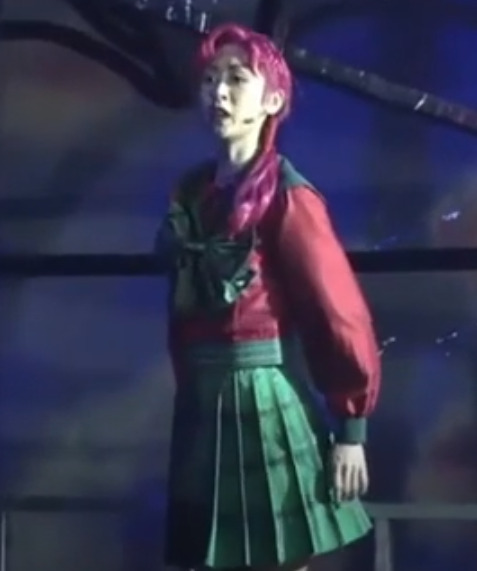
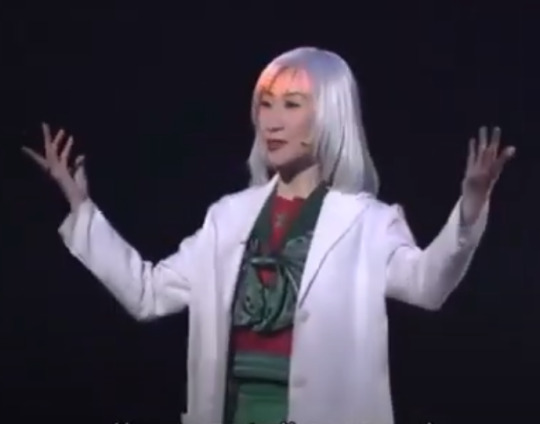
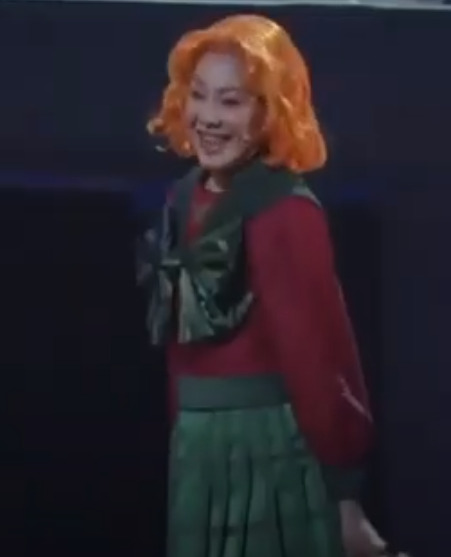
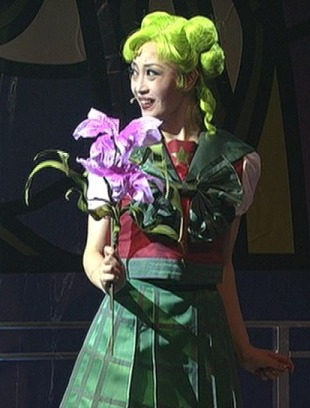
Nelke Myu (Un Nouveau Voyage)
This time, all the Witches 5 are shown as Mugen students. And just like for the older musicals, they wear the green bow. In one scene in particular, Eudial is referred to as "senpai" by Mimete, which may indicate she is the oldest (or a reference to the 90s anime where Eudial is called senpai by Mimete). Mimete is also referred to as "senpai" by Minako, seeming to confirm that they are indeed high schoolers (as opposed to Minako and the other senshi being middle schoolers).
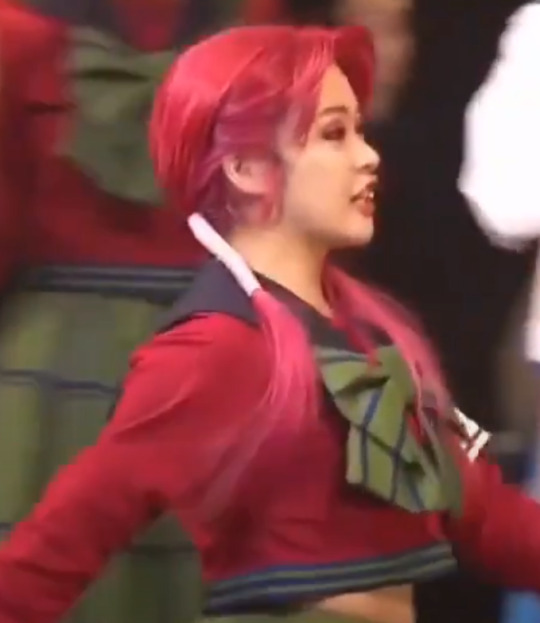
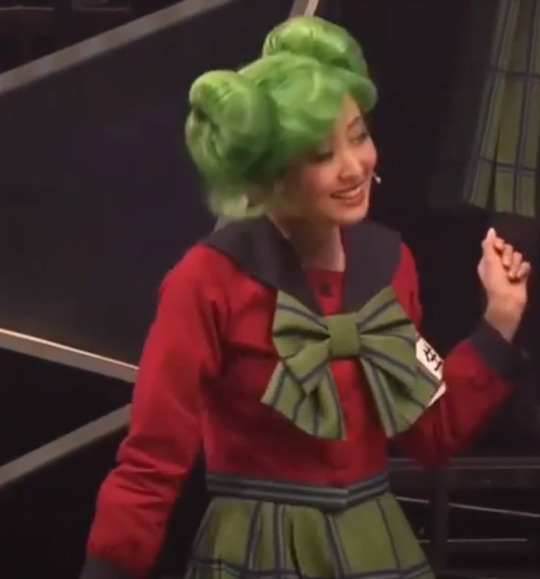
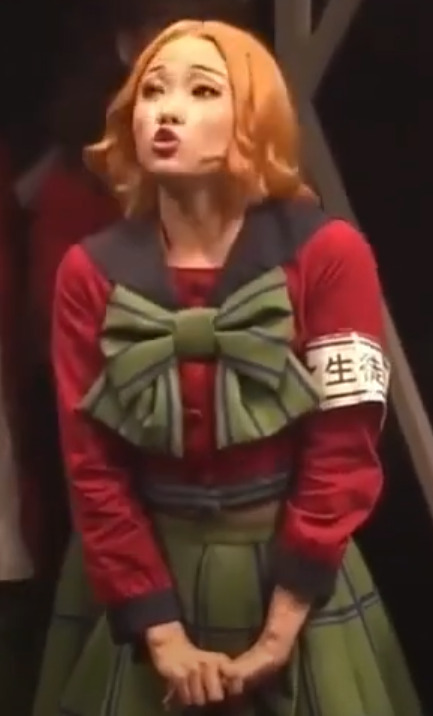

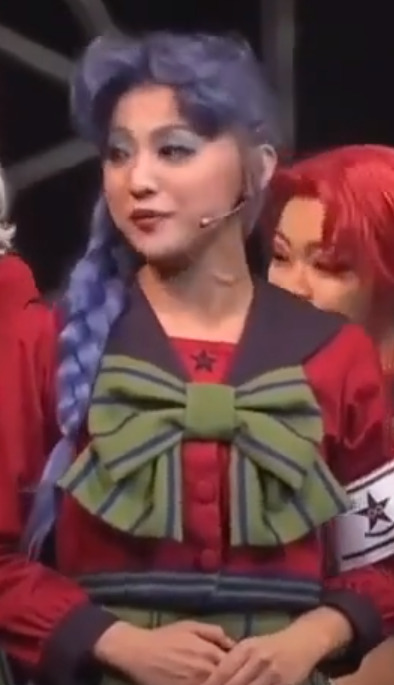
In conclusion
In most continuity, the Witches 5 appear to be of high school age (15-18) except for Crystal where most of them are of middle school age (13-15) while Eudial is in high school. In either case, it appears that Eudial is depicted as the oldest.
My personal headcanon is that, if they are in high school, Mimete and Tellu are in first year, Viluy and Cyprine/Ptilol are in second year and Eudial is in third year. Similarily as the Spectre Sisters who the order of youngest to oldest is the reverse of the inners (Petz being the oldest while Jupiter is the youngest etc), my headcanon would follow that logic but with the Witches 5 following the order of the inners age. So Tellu would be the youngest just like Jupiter (15), followed by Mimete (15-16), Viluy (16), Cyprine (16-17) and then Eudial (18).
#witches 5#sailor moon#death busters#eudial#mimete#tellu#viluy#cyprine#ptilol#eugeal#mimet#tellur#telulu#theory#headcanon#analysis#90s anime#manga#sailor moon crystal#sera myu
25 notes
·
View notes
Text
What if i submitted a paper for the conference..
#i have Enough Thoughts for a 20 min presentation on mimetic theory in musicology. or the lack#of mimetic theory being used in musicological discourse#i could do it.#if i had the self control#quip
4 notes
·
View notes
Photo

Man is the creature who does not know what to desire, and he turns to others in order to make up his mind. We desire what others desire because we imitate their desires.
- René Girard (1923-2015)
Frnechman René Girard’s work has been enjoying a renaissance in recent years. He has long been recognised for his theory of human behaviour and human culture. In 2005 he was inducted into the Académie française, and in 2008 he received the Modern Language Association's award for Lifetime Scholarly Achievement. He was Professor Emeritus at Stanford University.
Back more than 50 years ago, René Girard started teaching French literature because he needed a job. He hadn't even read many of the books he was assigned to teach. Then, as he studied the classic novels of Stendhal and Proust with a fresh mind, staying one step ahead of his students, he was struck by a series of similarities from novel to novel. Unbound by any narrow research agenda, Girard discovered a simple but powerful pattern that had eluded sophisticated critics before him: imitation is the fundamental mechanism of human behaviour.
Stories thrive on conflict between characters. By reading the great writers against the grain of conventional wisdom, Girard realised that people don't fight over their differences. They fight because they are the same, and they want the same things. Not because they need the same things (food, sex, scarce material goods), but because they want what will earn others' envy. Humans, with a planning intelligence that sets them apart from all other animals, are free to choose. With freedom comes risk and uncertainty: humans don't know in advance what to choose, so they look to others for cues.
People can desire anything, as long as other people seem to desire it, too: that is the meaning of Girard's concept of "mimetic desire." Since people tend toward the same objects of desire, jealousy and rivalry are inevitable sources of social tension.
#girard#rené girard#quote#mimetic theory#sociology#philosophy#human condition#human nature#desire#wants#needs#imitation#copying#society#mimetic desire
83 notes
·
View notes
Text
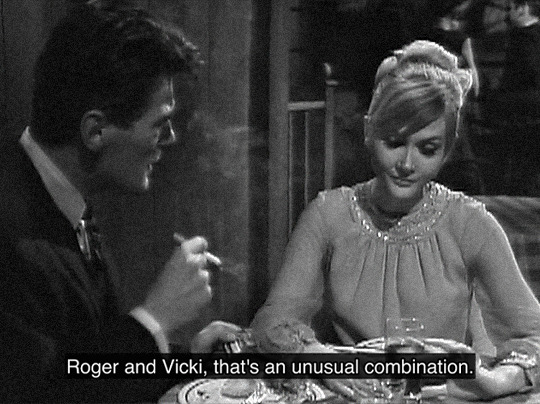
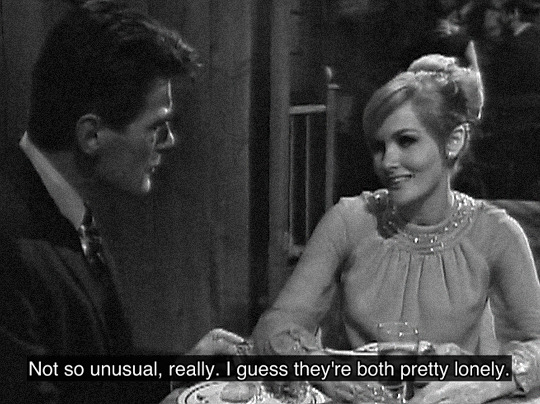

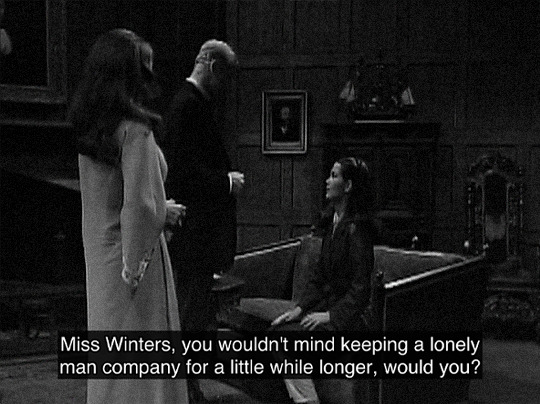
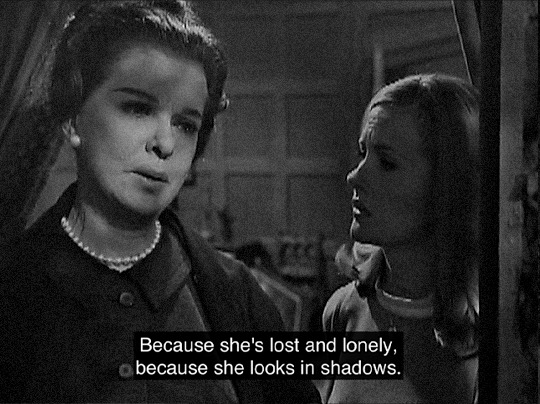

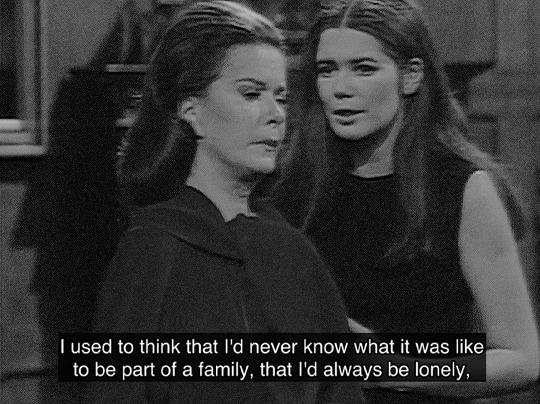

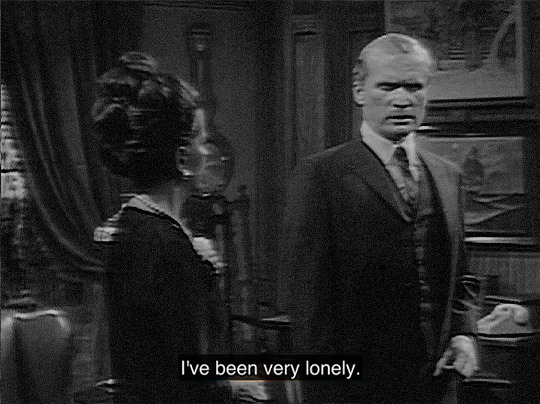

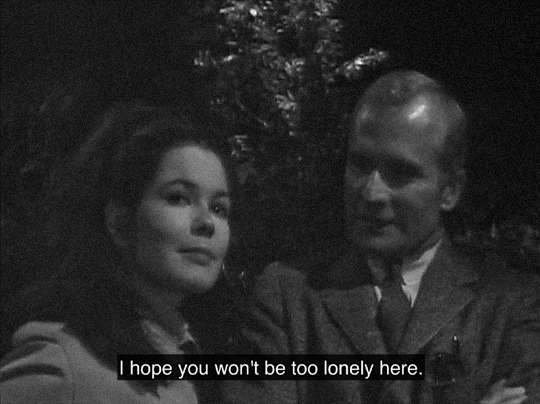
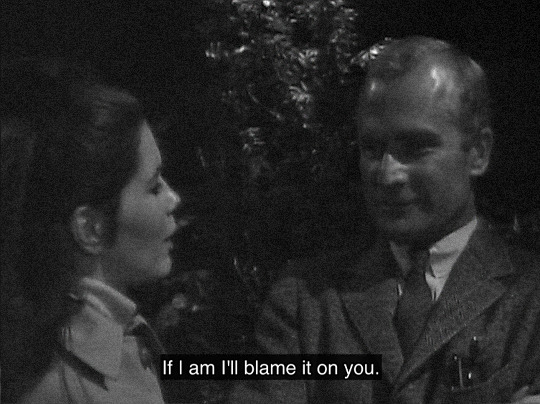
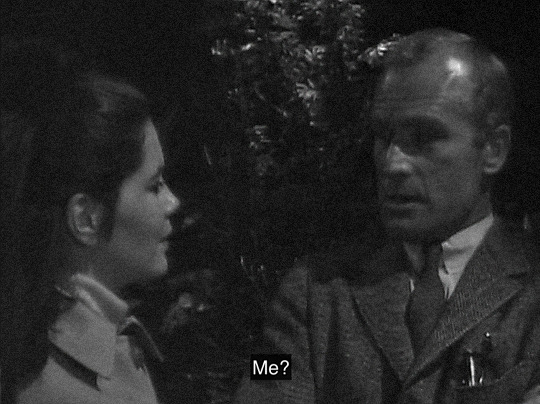
r/v + loneliness.
102 / Daphne du Maurier, Rebecca, ch. 4 / 4 / 8 / Art Wallace, Shadows on the Wall / 603 / Daphne du Maurier, Rebecca, ch 4. / 473 / Richard Sherman, Demo: "Lovely, Lonely Man/Chitty Chitty Bang Bang Finale" / 2
#➤ roger collins & victoria winters. ┊ pain sometimes precedes pleasure,miss winters.#➤ edits & art. ┊ the evans cottage art gallery.#compilation tag#idk I have just been Thinking about this since that gifset lol.#‘I’ll blame it on you‚’ she says — because you are the one who has brought me here‚ she thinks#because she seems to anticipate even in their first meeting that she will play Eyre and he Rochester.#there had better be many more such tête-à-tête’s on the cliff side or she’ll be terribly disappointed !#[and not only cliffside proselytizing: barging into her room at all hours‚ chasing her around town‚ dragging her bodily into the drawing#room‚ and‚ occasionally on a good day‚ an actual genuine date or a meal sometime.]#Roger has –– in theory –– everything that she wants. a family‚ a home‚ a wife and child‚ history and ancestry! boy does he have that!#and yet he is terribly terribly alone in this well he has poisoned.#(from which‚ I might add‚ vicki drinks greedily.)#''What do you want out of life?'' when he's already achieved (or so it appears on the outside) the midcentury blazon of success:#a family‚ a well-to-do office position at which he really does nothing‚ a succession of american-made sports cars.#he may be separated from his wife but together‚ he and elizbeth and david and carolyn form a mimetic image of the nuclear family.#to which vicki is desperate to grasp onto‚ even in its most nightmarish form‚ whether or not she realizes that's why she stays.#but what does he want? he wants the same thing she wants. love and companionship. (that he hasn't yet ruined. that he can't stop ruining.)#she may not precisely understand his type of loneliness but she knows about loneliness among people. she's lived it.#and she knows too about ... a visceral loneliness pushing you to push people even further away (as in the childhood story she tells david).#so she sees through his fronts a lot of the time‚ whether they be a layer of charm‚ or terror. and boy does he hate that. being seen for#something real. where his actions matter and produce consequences. where feeling is real – good or bad.#the little governess and her capacity to find shadows to throw light on! whether they be locked chambers in the basement or the atria.
11 notes
·
View notes
Text
girard would kill me for this but. there has to be at least one archaic society in star wars that, although they played no direct role in the death of vader, are not immune to the scapegoat mechanism and so see his death as an end to their suffering (under the empire), leading to his deifciation in their society. and obviously then also leading to the reenactment of his death as a sacrifical rite
#booooo this does not apply to him bc he is not part of that archaic society. they would not know his ass. and while a 'scapegoat' does not#technically in girard's theory necessitate innocence of the victim. it does imply it. also the scapegoat mechanism#necessitates a previous mimetic conflic. so. fail on all counts really.#but god i want this to work so bad#there could be a society on tatooine.... killing a guy as a sacrifice every year to replicate his death... the possibilities#everyone look away im purposefully bending and breaking girard for the stupid space wars guy...#sw#if any of u are like 'i've read girard and i get what u're talking about but y r u wording it like that. thats strange' -#- its bc i read the german translation and im translating that back into english.
9 notes
·
View notes
Text
the metaleptic dimensions of iwtv could very easily feel sooo hokey but the fact that they make me want to self disintegrate instead is incredibly impressive
#want to make some sort of post about the mimetic/thematic/synthetic in this show#would u still think i'm hot if i brought narrative theory here 😔#idk abt the books but like the metalepsis in the og movie DID feel hokey yk. its crazy out there
0 notes
Text
okayyy i've now organised the first three months of my archive and i'm Not Allowed to do any more today <3
#i have ten million new tags and they all mean the same thing but that's okay that's ummm mimetic. right#and me continuing to refer to that theory while still not 100% getting it is also mimetic (copying cooler ppl) so legally im untouchable :3
1 note
·
View note
Text

This isn’t a “haha he is a woman” post. I am serious. I truly believe that he birthed Angel himself.
“Umm borderlands community doesn't care about female characters” Handsome Jack, the fan favourite, is literally a woman. But go off ig😭😭
#if you don’t love me at my handsome jack mpreg posting#you don’t deserve me at my analysis of borderlands through the lens of Girard's mimetic theory#☀️
19 notes
·
View notes
Text
this literally happened to xie lian btw

#except the ‘is the drought actually resolved by scapegoating and banishing royalty’ thing is. done way more satisfactorily in tgcf#HOW ARE YOU PUTTING ON. sorry how are you putting on a production of oedipus#the play girard developed mimetic theory out offffgf. to such a large degree. and losing in a mimetic theory contest to tgcf#PUELLA ADIUVA!!!!!!#oedipus#tgcfposting#beeps
15 notes
·
View notes
Text
"Yeah, with regards to the Crawler—growing up, I was drawn to Salvador Dalí. He studied the old masters and acquired techniques so that he could render reality as reality. And then he chose not to. Even when he didn’t, there are still certain elements of the paintings that display the skill of someone who can do mimetic reality, just applied to this larger canvas with a different purpose.
The Crawler is composed of all these incredibly minute, specific details of texture and appearance. They’re kaleidoscoping—some readers use the word 'abstract.' But in actual fact, it is what the biologist is seeing and experiencing. If she has any failing, it’s because she’s trying to convey the tactile experience of constant morphing. That’s a challenge for the novelist: you have to have readers experience it viscerally. You cheat because you can never really be in a character’s head. The biologist, left to her own devices and not required to be the protagonist of my novel, would be doing field notes. But a character is an artificial construct. You’re not including all of them, just trying to get as close as you can so that you’re still creating narrative as opposed to moments.
[James Joyce’s] Ulysses probably gets closest to recording moments. I admire it, but it’s also hard to read because you don’t know what has importance and what doesn’t. To some degree, Ulysses abdicates the novelist’s responsibility to actually choose the elements that are in the novel in favor of some other idea of what a novel is. I admire that as well. Novels are made of approximations—that includes the description of the Crawler. In theory, the biologist might have later done field notes that were more clinical, not this 'in the moment.' But for purposes of a novel, which has to have scenes, you get panoply, montage."
Jeff Vandermeer, The Hegemony of What Was Real, in LARB, November 29, 2024.
62 notes
·
View notes
Note
can you do a blog about the main types of book genres there are if you haven't already? and how to know what you're writing?
Types of Book Genres
Mystery. Follows a crime (like a murder or a disappearance) from the moment it is committed to the moment it is solved. Mystery novels are often called “whodunnits” because they turn the reader into a detective trying to figure out the who, what, when, and how of a particular crime. Most mysteries feature a detective or private eye solving a case as the central character.
Thriller. According to the New York Public Library, thrillers gradually build anxiety and suspense. Examples of thrillers include “Gone Girl” by Gillian Flynn, “All Her Little Secrets” by Wanda M. Morris and “The Silent Patient” by Alex Michaelides. ⚜ Psychological Thriller
Horror. “Carrie” by Stephen King, “The Haunting of Hill House” by Shirley Jackson and Edgar Allen Poe’s work are all under the umbrella of horror. These works are intended to frighten audiences and elicit a feeling of dread, according to the CDE.
Historical Fiction. Historical fiction takes place in a historical setting, the CDE notes. Some examples of historical fiction include “The Prophets” by Robert Jones, Jr. and “The Four Winds” by Kristin Hannah.
Romance. Romance Writers of America (RWA) noted that romance refers to optimistic and emotionally satisfying stories that focus on a central love story. “The Love Hypothesis” by Ali Hazelwood and “Red, White and Royal Blue” by Casey McQuiston are both romance novels.
Western. Primarily set in the American Old West between the late 18th century and late 19th century and tell the stories of cowboys, settlers, and outlaws exploring the western frontier and taming the Wild West.
Bildungsroman. Translates to “novel of education” or “novel of formation,” chronicles a character’s journey from young innocence to worldly adulthood. This is a specific type of coming-of-age story in which the character gains knowledge and experience, even as innocence is lost.
Speculative Fiction. Refers to genres not based in reality, including work with magical, supernatural or otherwise imagined elements. Essentially, speculative fiction is the opposite of mimetic fiction. The category includes subgenres like fantasy, science-fiction, dystopian fiction and more, Witcover noted.
Science Fiction. This genre often involves science and technology of the future. Science fiction is frequently set in space or a different universe or world. It often uses some real theories of science.
Fantasy. According to the California Department of Education (CDE), fantasy "invites suspension of reality." The genre encompasses stories that wouldn't happen in real life, often set in another world or including magical elements.
Dystopian fiction. Imagines a future place in cataclysmic decline.
Action and Adventure. The tension of the protagonist’s journey in an adventure story creates a pulse-pounding, adrenaline-pumping storyline. Dramatic car chases, secret missions, and violent fight scenes often pop up in famous action stories. Great action writing draws in your audience, getting their adrenaline pumping as they turn the page.
Nonfiction (Memoir: Stories from an author’s life that offer a firsthand account of events are called memoirs. According to Reader's Digest, some highly-recommended memoirs include “I Know Why The Caged Bird Sings” by Maya Angelou and “Spare” by Prince Harry. ; Autobiography: a nonfiction (true) account of someone’s life. It is written by the subject of the autobiography; Biography: tell the story of a notable person’s life, written by someone other than the subject. Some examples are “Into the Wild” by Jon Krakauer, which tells the story of the adventurer Chris McCandless, and “The Immortal Life of Henrietta Lacks” by Rebecca Skloot.)
Food and Travel. Cookbooks, food history books, travel guides and travel memoirs all fall under this category that includes “The Omnivore's Dilemma” by Michael Pollan and “My Life in France” by Julia Child.
Humor. Strong humor writers have a way of spotting the patterns of life and bringing them to the surface at exactly the right moment.
Young Adult. YA books are intended for readers between 12 and 18 years old, according to Smithsonian Magazine. Some examples include “The Hunger Games” by Suzanne Collins and “The Hate U Give” by Angie Thomas.
Children's Fiction. Many classic examples of children’s literature are picture books, including “Where the Wild Things Are” by Maurice Sendak or “Don’t Let the Pigeon Drive the Bus” by Mo Willems. Scholastic noted most picture books are intended for children up to seven years old.
Knowing your Genre. The world of literature abounds with different genres.
Although every literary genre has its own trends and defining characteristics, the divisions between these categories aren't always clear. Whether you’re picking another book off the shelf or plotting out your new novel, learning more about genre can help you decide what comes next.
If you want to become a writer, there are a number of reasons to learn about genres, according to Paul Witcover, associate dean of the online Master of Fine Arts (MFA) in Creative Writing program at Southern New Hampshire University (SNHU).
“I feel it’s important for writers to have an understanding of genre because it will impact how their books are marketed, as well as how they are perceived by publishers,” he said. “But I also think writers can be too concerned with genre.”
Although he encourages writers to learn about the subject, Witcover noted a tendency for overly rigid ideas about the distinctions between genres. “Concepts of genre are more fluid than writers may believe,” he said. It's important to keep that fluidity in mind.
Genre is determined by need and audience expectation. Its set functions are determined by its social need.
Broadly speaking, the fiction world is divided into 2 segments: literary fiction and genre fiction.
Literary fiction typically describes the kinds of books that are assigned in high school and college English classes, that are character driven and describe some aspect of the human condition. Pulitzer Prize and National Book Award winners tend to come from the literary fiction genre.
Genre fiction has a more mainstream, populist appeal. It traditionally comprises genres such as romance, mystery, thriller, horror, fantasy, and children’s books.
Some genre writers straddle a line between genre-focused commercial fiction and the traditions of literary fiction.
Traditionally, there are 4 broader categories of genre:
Fiction: Imagined or invented literature is called fiction, Writers & Artists noted. Examples of fiction titles include “1984” by George Orwell and “Little Fires Everywhere” by Celeste Ng.
Nonfiction: According to Writers & Artists, nonfiction refers to fact-based works. Some nonfiction titles include “The Body Keeps Score” by Bessel van der Kolk and “I Am Malala” by Malala Yousafzai, and “Essentials of Classic Italian Cooking” by Marcella Hazan.
Poetry: Britannica defines poetry as “literature that evokes a concentrated imaginative awareness of experience or a specific emotional response through language chosen and arranged for its meaning, sound and rhythm.” Poetry incorporates poetic elements and encompasses the work of writers like Maya Angelou, Robert Frost, Amanda Gorman and Richard Siken.
Drama: Dramatic literature refers to texts of plays that can be read for their literary value as well as performed, according to Britannica. Dramas include stage directions and specific formatting not found in prose or verse. Some of the most studied dramas are Shakespeare’s plays, like “Hamlet” and “Romeo and Juliet.” You might be familiar with other dramas, too, like “Death of a Salesman” and “The Crucible” by Arthur Miller or August Wilson’s Century Cycle of 10 dramas depicting the Black experience in the U.S. throughout the 20th century, including “The Piano Lesson” and “Fences.”
Although most writing falls into at least one of these 4 categories, the edges are a bit blurred, and there can be overlap.
Sources: 1 2 3 4 5 6 ⚜ More: Writing Notes & References
It seems the general advice is to learn about the different genres first, and try to see which elements your story has that align with them. Perhaps start with the broader categories first, then narrow it down to the major genres, until you identify which specific subgenre your story fits. And it's fine if they overlap, as this happens with most novels. Hope this helps!
#writing reference#genre#writeblr#dark academia#writers on tumblr#spilled ink#fiction#novel#creative writing#literature#writing prompt#light academia#writing tips#writing advice#writing inspiration#writing ideas#writing resources
117 notes
·
View notes